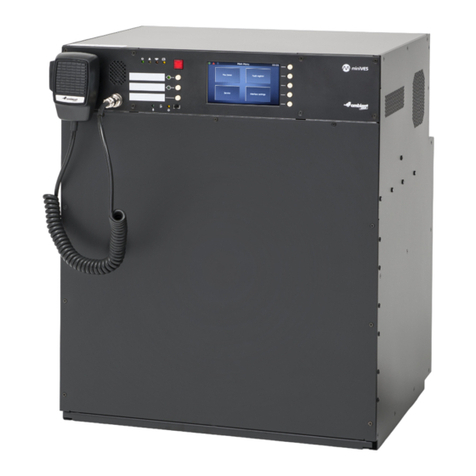
Compact Voice Alarm System
User Manual
4
8
Do not install near any heat sources such as radiators, heat registers, stoves, or other
apparatus (including ampliers) that produce heat or in direct sunlight.
9 No naked ame sources, such as lighted candles, should be placed on the apparatus.
10
Do not defeat the safety purpose of the polarized or ground-type plug. A polarized plug
has two blades with one wider than the other. A grounding type plug has two blades and
a third grounding prong. The wider blade or the third prong are provided for your safety.
Ifthe provided plug does not t into your outlet, consult an electrician for replacement of
the obsolete outlet.
11 Protect the power cord from being walked on or pinched particularly at plug, conveni-
ence receptacles, and the point where they exit from the apparatus.
12
Only use attachments/accessories specied by the manufacturer. Any mounting of the
apparatus should follow the manufacturer’s instructions, and should use a mounting acces-
sory recommended by the manufacturer.
13
Use only with the cart, stand, tripod, bracket or table specied by the manufacturer, or
sold with the apparatus. When a cart is used, use caution when moving the cart/apparatus
combination to avoid injury from tip-over. Quick stops, excessive force, and uneven surfaces
may cause the appliance and cart combination to overturn.
14
Unplug this apparatus during lighting storms or when unused for long periods of time.
Not applicable when special functions are to be maintained, such as evacuation systems.
15
Refer all servicing to qualied service personnel. Servicing is required when the apparatus
has been damaged in any way, such as power-supply cord or plug is damaged, liquid has been
spilled or objects have fallen into the apparatus, theapparatus has been exposed to rain or
moisture, does not operate normally, or has been dropped.
16
Avoid mechanical shocks. Strong impacts and shocks may damage the device. Transport the
device carefully and avoid dropping it.
17 The apparatus shall not be exposed to dripping or splashing and that no objects lled
with liquid, such as vases, shall be placed on the apparatus.
18
Batteries (battery pack or batteries installed) shall not be exposed to excessive heat
such as sunshine, re or the like.
Caution! Danger of explosion if battery is incorrectly replaced. Replace only with
the same or equivalent type. Dispose of used batteries according to the environ-
mental law and procedures.
19 Professional installation only. Do not use this equipment in residential applications.
20
Condensation. In order to avoid condensation; wait a few hours before turning on the equip-
ment when it is transported from a cold to a warm space.
21
Hearing damage. For apparatus with audio output, to prevent possible hearing damage,
donot listen at high volume levels for long periods.




























